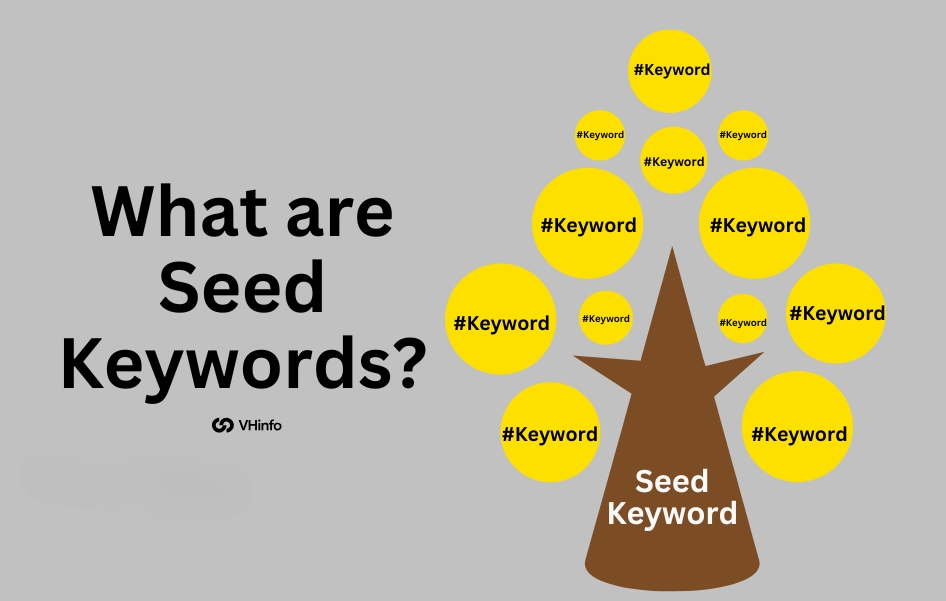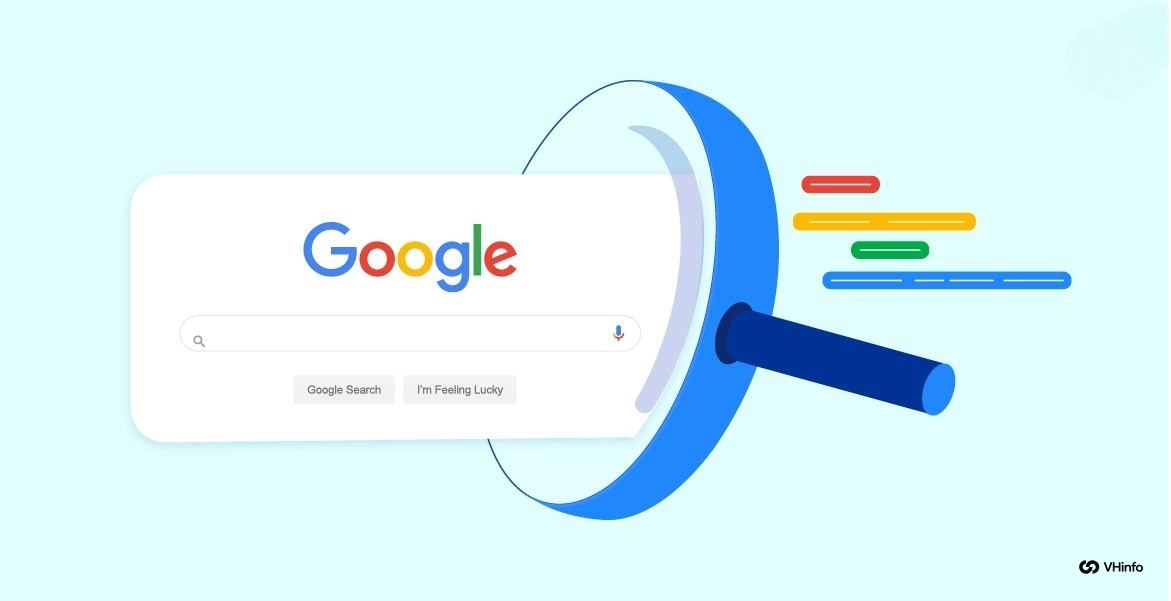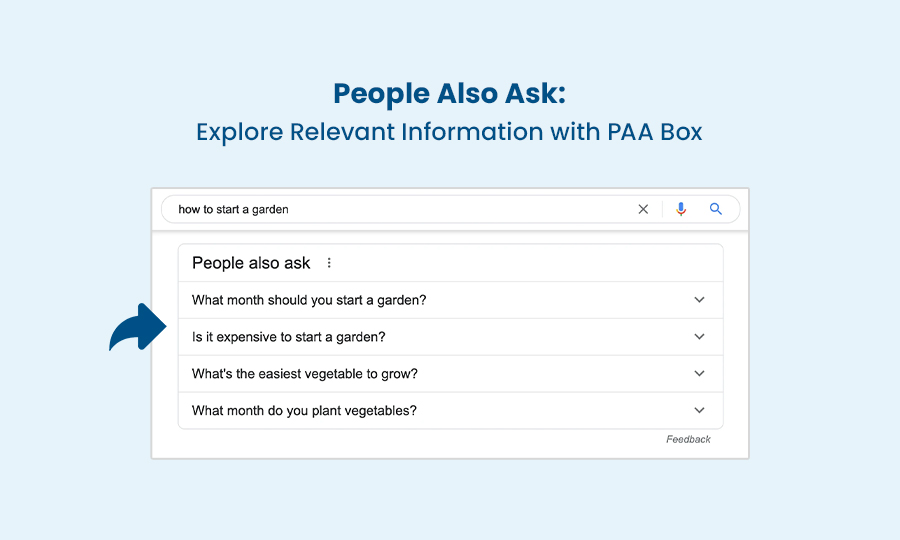A strong SEO strategy begins with the right keywords. The very foundation of your keyword research and content strategy is built on what we call seed keywords. These are the starting points for finding all the other phrases your customers use.
Think of them as the seeds from which your entire SEO plan will grow.
This article will show you what a seed keyword is and why it is so important for your business.
We will look at examples of seed keywords and explain how to find them. You will also learn how to turn a simple list of keywords into a powerful content strategy that brings more people to your website.
At VH-info, we specialize in turning that content strategy into tangible results by building the high-authority backlinks SaaS companies need to grow. Getting your seed keyword list right is the first step to better search engine optimization and more organic traffic.
What Are Seed Keywords?

A seed keyword is the main topic or idea at the heart of your business. These terms are usually short, broad, and form the base of your entire keyword strategy. If you were building a house, seed keywords would be the concrete foundation. Everything else, like your product pages, blog posts, and social media content, is built on top of them. This is the absolute starting point of the keyword research process.
Definition Of A Seed Keyword
A seed keyword is a one or two-word phrase that describes a broad topic. It is the most basic way your target audience might look for what you offer. For example, if you sell running shoes, your main seed keyword might be “running shoes.”
It doesn’t have any extra words like “best,” “for men,” or “near me.” It’s just the core term.
These are the main ideas you will use to generate hundreds of more specific keyword ideas. The entire goal of finding these seed terms is to create a solid foundation for your marketing efforts.
Key Characteristics That Define Seed Keywords
Seed keywords have a few key things in common. They are the beginning of your keyword research strategy.
Here is what makes them special:
- They are broad: A seed keyword covers a wide topic, not a specific niche. “Coffee” is a seed keyword, while “low-acid dark roast coffee beans” is a more specific, long-tail keyword.
- They have high search volume: Many people type these broad search terms into search engines every month. A good keyword tool can show you the monthly search volume for any term.
- They are highly competitive: Because they have a high search volume, many websites try to rank for them. This means they often have a high keyword difficulty score, making it hard for a new site to appear high in the search engine results.
- They are the starting point: You don’t always try to rank for the seed keyword itself. Instead, you use it to find other, more specific potential keywords that have less competition.
Understanding the Difference: Seed Vs. Long-Tail Keywords
It is important to know the difference between a seed keyword and a long-tail keyword. Your content marketing will use both, but they serve different purposes. A seed keyword is a short, broad term, like “invoicing software.”
It has a high search volume, but the user intent is not very clear. Is the person looking to buy, learn, or compare? It’s hard to tell.
A long-tail keyword is a longer, more specific phrase, like “best invoicing software for small business owners.”
These keyword phrases have lower search volume but much clearer search intent. The person searching for this is likely ready to make a decision. Your SEO strategy should include a mix of content that targets both types of search queries to attract a wider target audience.
Why Are Seed Keywords the Foundation Of Your SEO Strategy?

Seed keywords are the backbone of your search engine optimization work.
Without a clear list of seed keywords, your marketing efforts will lack direction. They guide everything from the content you create to how you structure your website, helping you build authority and attract the right customers.
Their Role in Building Topic Authority
Search engines like Google want to show results from experts. When you create a lot of helpful content around a central topic, Google sees you as an authority on that subject. This is called topical authority. Your seed keywords define these central topics. For example, if your seed keyword is “project management,” you would create content about project management methods, tools, and tips.
When you thoroughly address the subject from every perspective, Google recognizes your site as a reliable authority, boosting the rankings of all your pages in search results.
How Do They Inform Your Entire Content Plan?
Your seed keyword list is the blueprint for your content strategy. Once you have your main topics, you can start brainstorming all the related things your audience might want to know. Each seed keyword can be the center of a “topic cluster.”
From a single seed keyword like “email marketing,” you can generate hundreds of keyword ideas for blog posts, guides, and videos. This makes your content creation process organized and makes sure every piece of content has a purpose.
It helps you build a library of helpful information that consistently brings in organic traffic.
Impact On Website Structure and Navigation
A good website is easy to get around. Your seed keywords can help you design your site’s structure. Often, each main seed keyword will have its own “pillar page.” This is a long, detailed page that covers the topic broadly.
For an e-commerce site, these might be your main category or product pages.
For example, a website selling car parts might have a pillar page for “brake pads,” which is a seed keyword. Then, smaller blog posts about “how to change brake pads” or “best brake pads for trucks” would link back to that main page.
This creates organized keyword clusters that help both users and search engines find what they need.
How to Find Your Most Important Seed Keywords?

Finding the right keywords is the most important part of the keyword research process. Your goal is to create a seed keyword list that perfectly matches what you offer and what your customers are looking for.
There are several ways to find these foundational potential seed keywords.
Brainstorming Based On Your Business Offerings
The first step is to simply think about your business. What do you sell? What services do you provide? Write down the most basic terms that describe your products or services. Don’t overthink it.
If you run a company that makes accounting software for freelancers, your first seed keyword ideas might be:
- accounting software
- invoicing
- freelance taxes
- bookkeeping
Analyzing Competitor Strategies
Your competitors are a great source of keyword ideas.
A smart competitor analysis can show you which seed keywords are already working for them. Look at the websites of your top competitors. What topics do they write about most? What words do they use in their page titles, headings, and meta descriptions?
You can use SEO tools to do this more effectively. At VH Info, we help SaaS companies identify the relevant keywords their competitors are ranking for. A good keyword research tool can give you a list of terms that are sending organic traffic to other sites in your industry.
This process helps you find gaps in their keyword strategy that you can fill.
Using Analytics to Uncover User Language
If you already have a website, you have access to valuable keyword data.
Google Search Console is a free tool from Google that shows you the exact search queries people used to find your site in a Google search. Go to the “Performance” report and look at the queries. You might find that people are using search terms you hadn’t thought of.
These real-world search queries are some of the best potential seed keywords because you know people are already using them to find solutions like yours. Add any relevant terms you find to your main seed keyword list.
Transforming Seed Keywords Into A Full Content Strategy

A list of seed keywords is just the beginning. The real magic happens when you turn that list into a complete content strategy. This involves expanding your initial ideas to cover every possible angle of a topic, helping you attract a wider audience and build topical authority.
Expanding Your List With Keyword Modifiers
Once you have your core seed keyword, you can create a huge list of keywords by adding “modifiers.”
Modifiers are words that make the search more specific. Common modifiers include:
- Questions: “how,” “what,” “why” (e.g., “what is content marketing”)
- Qualifiers: “best,” “top,” “cheap,” “review” (e.g., “best keyword tool”)
- Audience: “for beginners,” “for small business” (e.g., “SEO for beginners”)
By adding these words to your seed terms, you start to create long-tail keyword phrases. This process helps you generate endless keyword ideas for your content creation efforts.
Generating Long-Tail and Question-Based Ideas
From a single seed keyword like “SEO,” you can generate a massive list of long-tail variations. These longer phrases are important because they often have less competition and target users with a very specific search intent.
For example, someone searching for “SEO” has a broad interest. But someone searching “how to improve SEO for a local business” has a clear problem they want to solve.
Answering these specific questions with your content is a great way to attract qualified organic traffic. Tools like Google Autocomplete (the suggestions that appear in the search bar as you type) can give you great ideas for these longer search terms.
Creating Content Pillars and Topic Clusters
An effective content strategy is often built around “content pillars” and “topic clusters.” This is a way to organize your content to show search engines that you are an expert.
- Pillar Page: This is a long, comprehensive piece of content on a broad topic, targeting your main seed keyword. For example, you might create an “Ultimate Guide to Digital Marketing.”
- Topic Clusters: These are shorter articles that cover specific subtopics related to the pillar page. Each cluster article targets a long-tail keyword. For our “Digital Marketing” pillar, cluster topics might include “getting started with email marketing,” “social media advertising tips,” or “how to do keyword research.”
All the cluster articles link back to the main pillar page. This structure creates a network of related content, which helps build topical authority and improve your rankings for all the relevant keywords in that group. It is a core part of modern search engine optimization.
Top Tools For Discovering and Analyzing Seed Keywords

There are many great keyword research tools available to help you find and analyze potential keywords. Some of the best ones are free and easy to use. These SEO tools will provide you with the keyword data you need to build a strong keyword strategy.
Google Related Searches

When you perform a Google search, scroll to the bottom of the search engine results page. You will see a section called “Related searches.”
This is a list of other search terms that people who searched for your original query also looked for. This is a simple but powerful way to find related keywords and seed keyword ideas that you might have missed. It shows you how real users think and search.
People Also Ask

The “People also ask” (PAA) box often appears near the top of the search results. It shows a list of questions related to your search query. Clicking on a question reveals a short answer and often more related questions.
The PAA box is a goldmine for finding question-based keyword ideas. Creating content that directly answers these questions is a great way to capture a featured snippet and show your target audience that you have the answers they need.
Google Keyword Planner

The Google Keyword Planner is a free tool within Google Ads.
It is one of the most popular keyword research tools for a reason. You can enter a seed keyword, and the keyword planner will give you a long list of keyword suggestions, along with data on their monthly search volume and competition level (keyword difficulty).
While it is designed for advertisers, it is extremely useful for any SEO strategy. It gives you real data directly from Google.
Answer the Public

Answer the Public is a visual keyword tool. You enter a seed keyword, and it generates a visual map of hundreds of keyword ideas organized by questions (who, what, when, where, why), prepositions, and comparisons.
It’s a fantastic way to brainstorm for your content marketing plan and see all the different ways people are searching for your topic.
Google Trends

Google Trends is another free tool that helps you see the popularity of a seed keyword over time.
You can compare the search volume of multiple search terms to see which one is more popular or if a topic is seasonal. This helps you choose the right keywords that have lasting power and plan your content creation around seasonal peaks in interest.
At VH Info, we know that sifting through all this keyword data can be a lot of work.
Our platform is built to simplify the keyword research and link-building process specifically for SaaS companies, helping you identify the opportunities that will drive real growth without the guesswork.
FAQ’s:
How Many Seed Keywords Are Ideal to Start With?
It is good to begin with a small list of seed keywords. Try to pick about 5 to 10 words.
These should show the most important parts of your business. If you use too many at first, your plan may feel messy. It helps to start with a few and build strength around them. Later, you can add more seed keywords.
For SaaS firms, the VH-info site can help you find these key words. This makes sure your link-building plan works well from day one.
Can You Rank For A Broad Seed Keyword?
Ranking on the first page of search engine results for a broad seed keyword is very difficult. These terms have a high search volume and very high keyword difficulty. Instead of aiming directly for the seed keyword, focus on building topic clusters around it.
Establishing authority through ranking for various related long-tail keyword phrases enables you to later compete for the more general term.
At VH-info, we specialize in building the high-quality backlinks that signal this authority to search engines, making it more achievable for SaaS companies to eventually rank for those broader terms.
How Often Should You Update Your Seed Keyword List?
You should review your seed keyword list at least once or twice a year.
Digital marketing changes quickly, and new search terms can become popular. Use tools like Google Search Console and Google Trends to monitor how people are searching and if new topics are emerging. This ensures your content strategy stays fresh and relevant.
Can Seed Keywords Be Used to Identify New Content Opportunities?
Yes. Seed keywords are a great way to start finding new ideas for your content. When you use a keyword tool, you will see new words that link to your seed keywords. You may also find common questions and longer keyword versions.
This process gives you many ideas for your blog and social pages. It also helps with other ways you share content online.
VH-info goes further by showing which ideas can get good links for your SaaS site. This means you can choose the best topics that help bring value and more visitors to your website.
What is the Relationship Between A Seed Keyword and A Pillar Page?
A seed keyword and a pillar page are directly connected.
The pillar page is a major piece of content that is designed to be the most comprehensive resource on the topic of your seed keyword. The pillar page targets the broad seed term, while the supporting cluster content targets more specific, long-tail keyword phrases.
This structure is central to building keyword clusters and proving your expertise to search engines. A key part of making this strategy work is building quality links to your pillar page, a process VH-info is designed to manage for SaaS companies.
Conclusion
Seed keywords are the essential building blocks for any successful SEO strategy. They are the broad topics at the heart of your business and serve as the starting point for all your keyword research and content creation activities.
By brainstorming your main offerings, analyzing competitors, and using robust SEO tools, you can create a strong list of seed keywords and expand it into a full content strategy with pillar pages and topic clusters that establish your topical authority.
While creating great content is the foundation, earning high-quality backlinks is what truly boosts your authority and rankings.
At VH-info, we specialize in creating link-building strategies for SaaS companies, connecting your valuable content to the right audience to drive real growth. This organized approach to search engine optimization helps you create content that meets user intent, drives valuable organic traffic, and helps your business grow.
Getting your seed keywords right is the most important first step on your journey to better search rankings.


